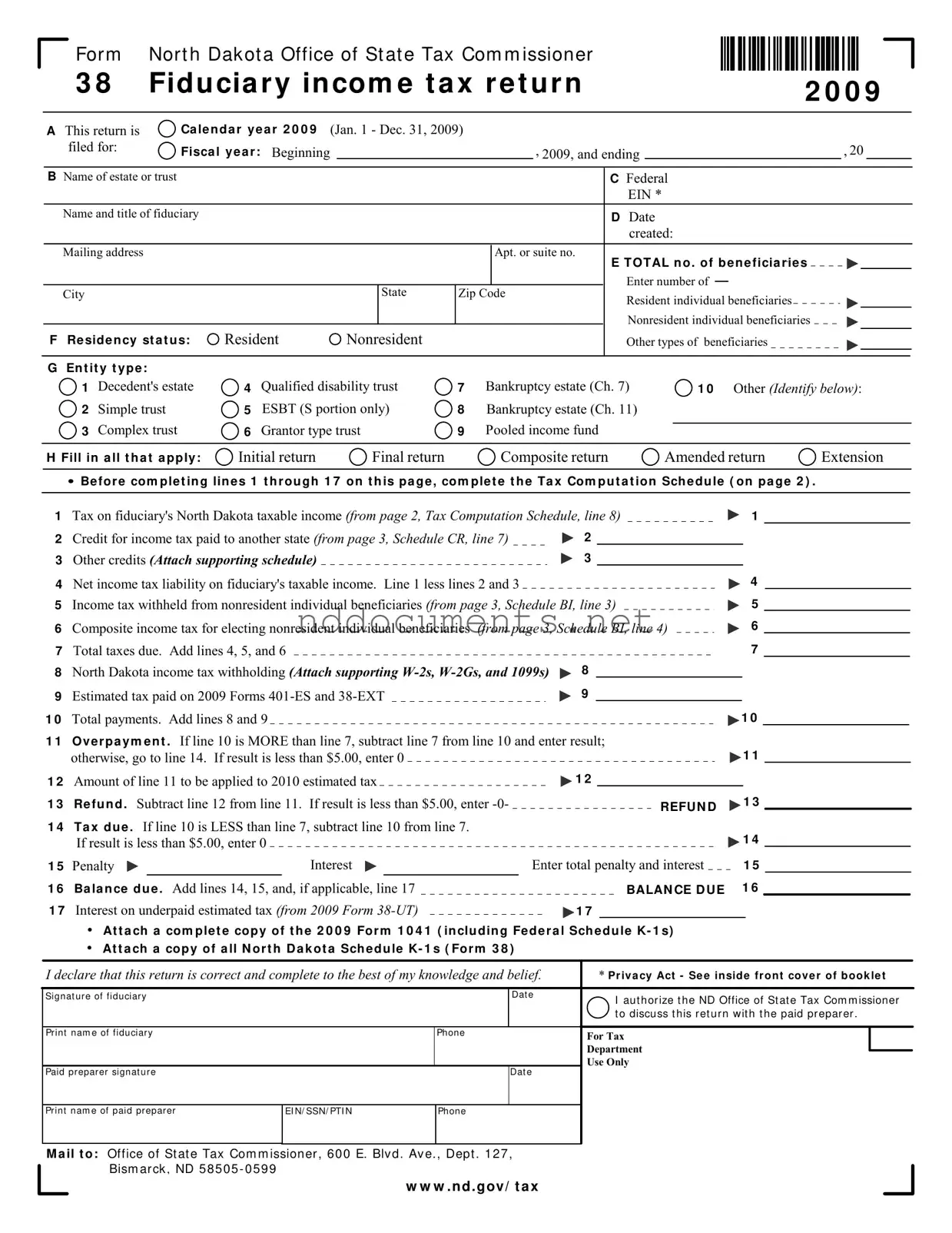The North Dakota 38 form serves as a crucial document for fiduciaries managing estates and trusts within the state. This form is specifically designed to report the income tax obligations of estates and trusts for the calendar year. It encompasses essential details such as the name of the estate or trust, the federal Employer Identification Number (EIN), and the residency status of beneficiaries. The form requires fiduciaries to indicate the type of entity, whether it is a decedent's estate, a simple trust, or a complex trust, among other classifications. Additionally, it includes sections for calculating the tax on the fiduciary's North Dakota taxable income, credits for taxes paid to other states, and any applicable overpayments or balances due. The completion of the North Dakota 38 form is vital for ensuring compliance with state tax regulations and for the accurate reporting of income distributed to beneficiaries, thus playing a significant role in the financial management of estates and trusts.
